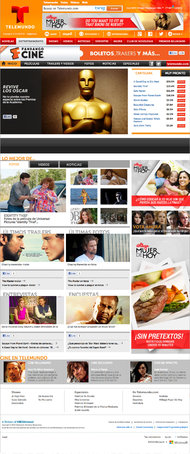In recent days, one of the most comprehensive destinations for gossip about the Cleveland kidnapping victims was not an American news outlet. It was Mail Online, the Web site of the British tabloid The Daily Mail, which has taken a distinctly gossipy approach to all news.
The kidnappings seem ready-made for the Mail Online’s tabloid formula, which has made it the third-most-visited newspaper site in the world. It attracted 46.4 million unique visitors in March, including 17.2 million visitors from the United States, according to comScore, drawn by a home page filled with stories about moose attacks, plastic surgery mishaps and celebrities’ hairstyles and weight changes posted down the right side in the popular “sidebar of shame.”
“They are certainly a site to be watched,” said Bonnie Fuller, the former editor of Cosmopolitan and US Weekly who now edits the gossip Web site HollywoodLife.com. “They really cover the waterfront of celebrities.”
Like other British newspaper sites, including the more traditional Guardian, Mail Online is making an even greater assault on American shores. In early 2011, The Daily Mail started covering celebrities in Los Angeles. A year later, it expanded to New York by opening an office in Manhattan’s SoHo neighborhood, filling offices with mainly British journalists paid from $40,000 to $60,000, according to a person who has worked alongside the British reporters in New York.
It is now an 80-person operation in the United States, according to George Simpson, a spokesman for the company, and reports on American stories with relish. Its coverage of the Cleveland kidnappings has focused on details like the “happy abduction day” cakes that the man charged in the case is said to have given each victim on the anniversary of her capture, and floor plans of his house.
Along with its characteristic aggressiveness and populism, Mail Online also brings some bare-knuckle tabloid habits that have angered some competitors in American media. The Daily News and The New York Times have accused Mail Online of lifting stories without attribution. A photo agency in Florida that sells celebrity photographs taken in Los Angeles sued the company, claiming it reprinted photographs without permission.
Some analysts who are generally positive about Mail Online’s growth are concerned about its journalism practices.
“They’re going to have to acquire fairly rapidly sources of content that are proper,” said David Reynolds, an equity analyst at Jefferies.
Mr. Simpson said that Mail Online was just trying to compete with other digital publishers like The Huffington Post “for whom aggregation is a way of life” and that “Mail Online has had to adapt to this new way of news gathering.” Mr. Simpson said that during fast-paced news stories, it can be difficult to determine who is the rightful copyright holder. But “we endeavor to pay the rightful copyright holder speedily and fairly.”
The bigger question facing Mail Online remains whether, like many other popular sites, it can attract the kind of revenue it needs to sustain its American operation. Will advertisers want to be placed next to articles with headlines like “Evil Monster Grandma” or “Man who thought he just had a runny nose for a year and a half finds out it was really his brain fluid leaking”? According to Mr. Reynolds, the American version of the Daily Mail Web site, with its own ads and mix of content, generates only about $7.2 million in annual revenue.
For now, many analysts consider the Mail Online a growth source for a strait-laced media company. The parent company’s total annual revenue is about $2.7 billion and its net income is $466 million. It depends on newspapers for about 20 percent of its profits, according to Mr. Reynolds.
Alex DeGroote, a media analyst with Panmure, Gordon Company, said that while Mail Online was still not profitable, its growth had helped its broader company’s stock price grow roughly 80 percent in the last year.
“I would argue that the main driver for that is the recognition of these online assets,” Mr. DeGroote said. “Think of Mail Online as a young, relatively immature asset that has continued to outperform any expectations.”
Mr. Simpson stressed that it’s early days for Mail Online in the United States.
Kitty Bennett contributed research.
Article source: http://www.nytimes.com/2013/05/10/business/media/britains-daily-mail-web-site-makes-foray-into-america.html?partner=rss&emc=rss
